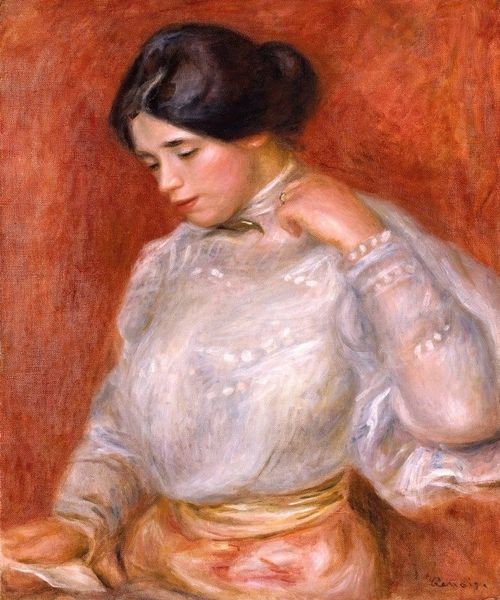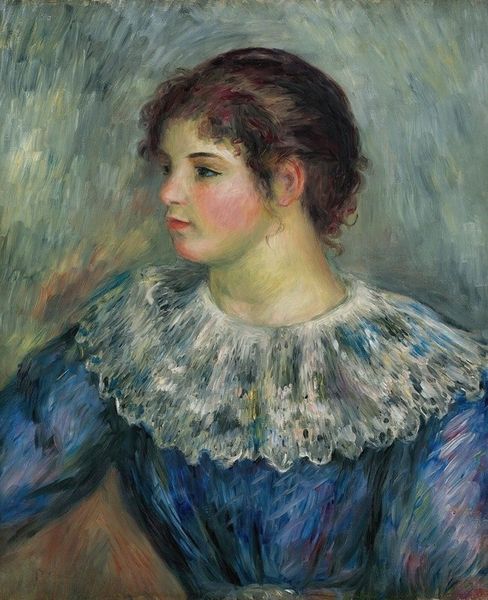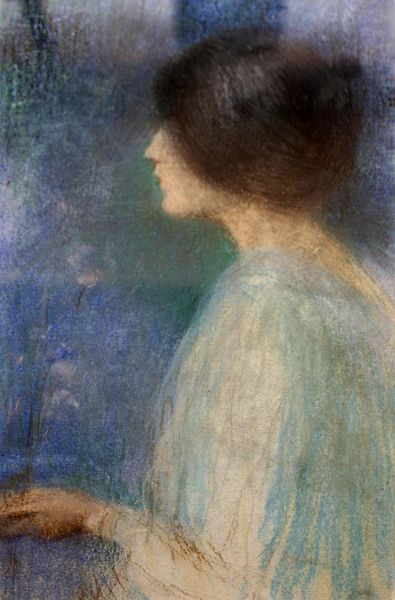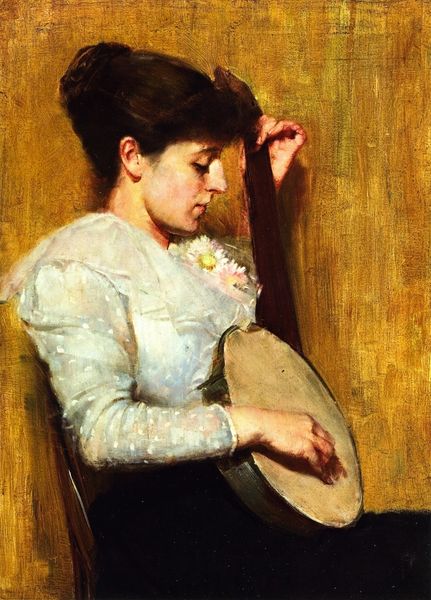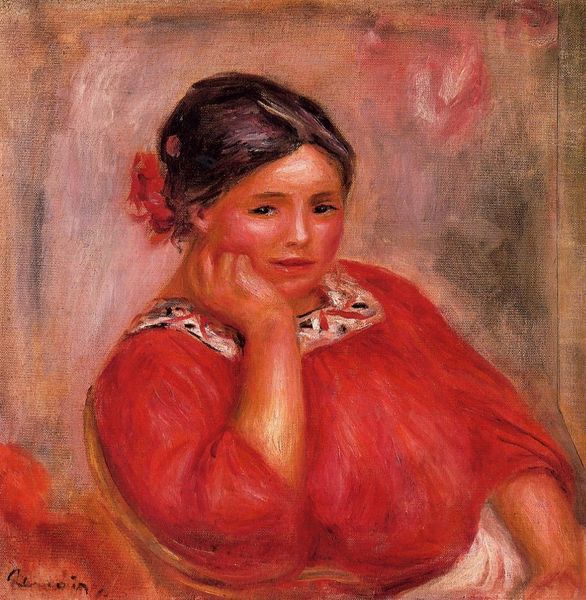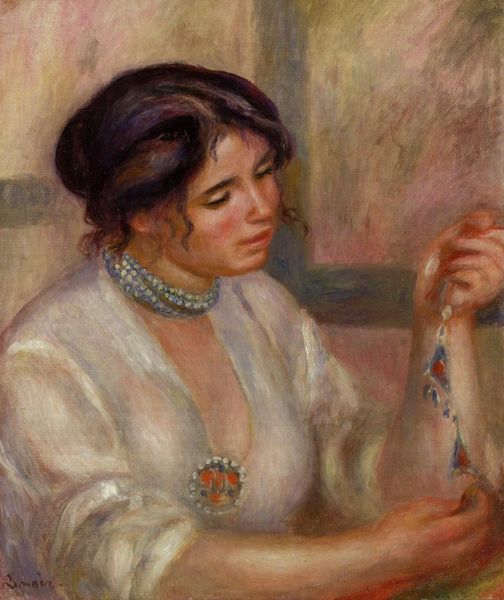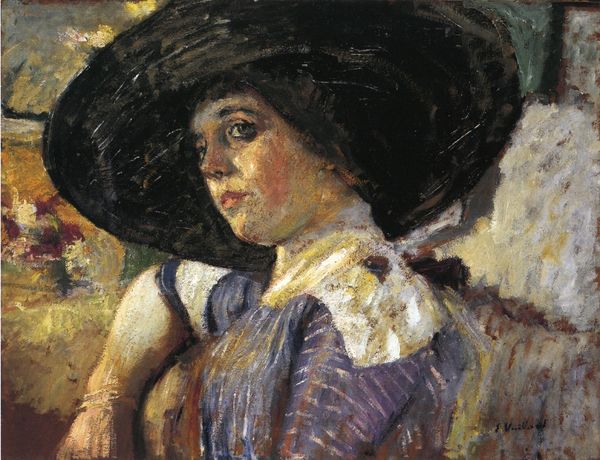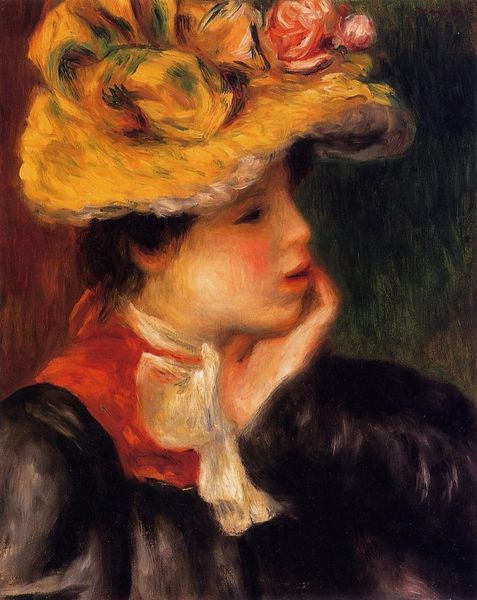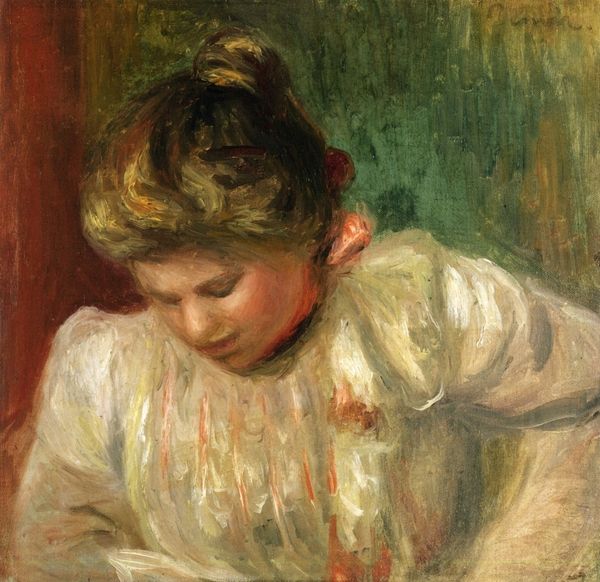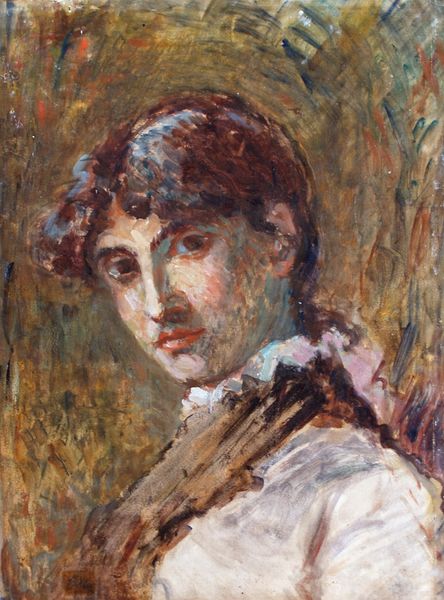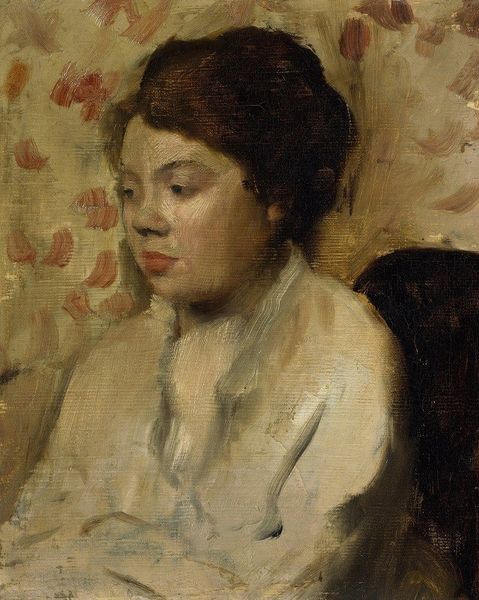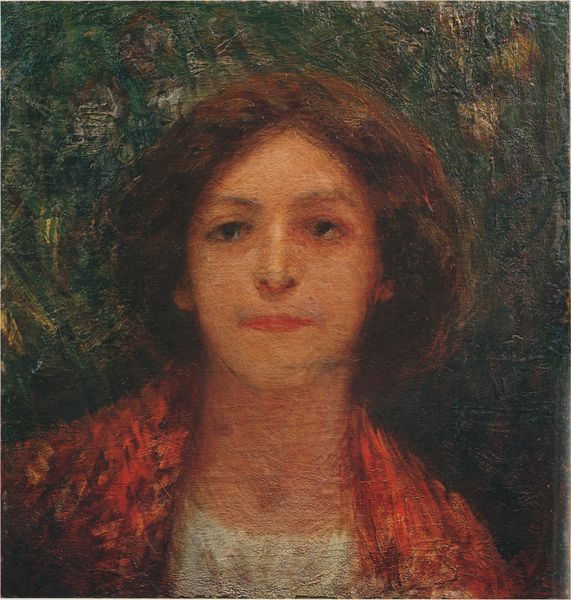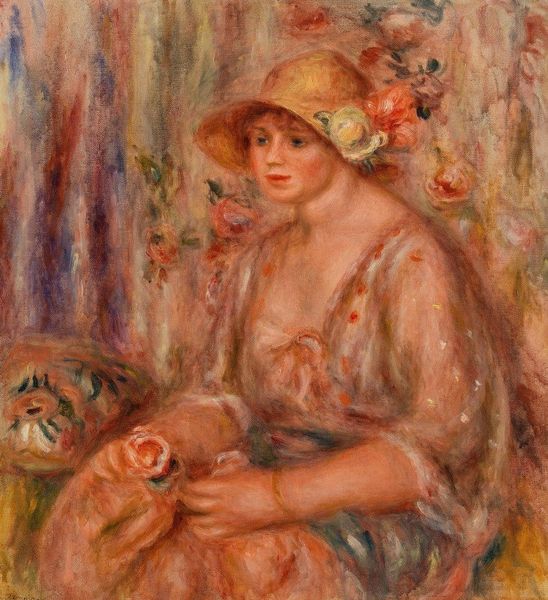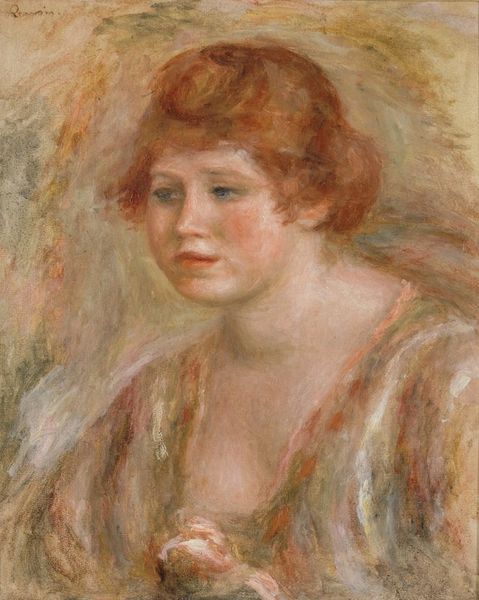
Dimensions: 50.2 x 40.3 cm
Copyright: Public domain
Editor: So, here we have Renoir’s "Woman with a Fan," painted in 1906. The soft hues and brushstrokes give it such a gentle feel. The way she looks away seems to hint at something beyond the canvas, doesn't it? What do you see in this piece, particularly given its historical context? Curator: What strikes me is how Renoir, often celebrated for his depictions of bourgeois leisure, here presents a woman whose gaze subtly challenges that very narrative. Consider the fan; beyond being a mere accessory, it becomes a prop, almost a barrier. The late 19th and early 20th centuries were pivotal for women’s rights. Does her averted gaze signify a quiet rebellion, a reluctance to meet the viewer's eye, or to perform the expected feminine role? What does the inclusion of the fan suggest about concealing and revealing? Editor: I hadn't thought about the fan that way, more of a decorative element. So, it's like she's consciously not engaging, which reflects this broader moment in history. Curator: Exactly. The Impressionists were often accused of painting surface appearances, but Renoir, perhaps unintentionally, captures a moment of transition, a hint of the burgeoning agency of women. The lack of opulent detail, the muted tones - are they perhaps symbolic of the limitations still imposed on women, even as they began to strive for more? Editor: That’s a much more nuanced interpretation than I initially had. It makes me think about what's *not* shown, too. Curator: Precisely! And in that absence, a powerful story emerges. What seemed simply a portrait becomes a subtle commentary on gender and societal expectations. Editor: Wow, I'll definitely look at Impressionism differently now, focusing more on those potential undercurrents. Curator: That's the power of art: to hold up a mirror to society, and invite us to question what we see reflected.
Comments
No comments
Be the first to comment and join the conversation on the ultimate creative platform.
